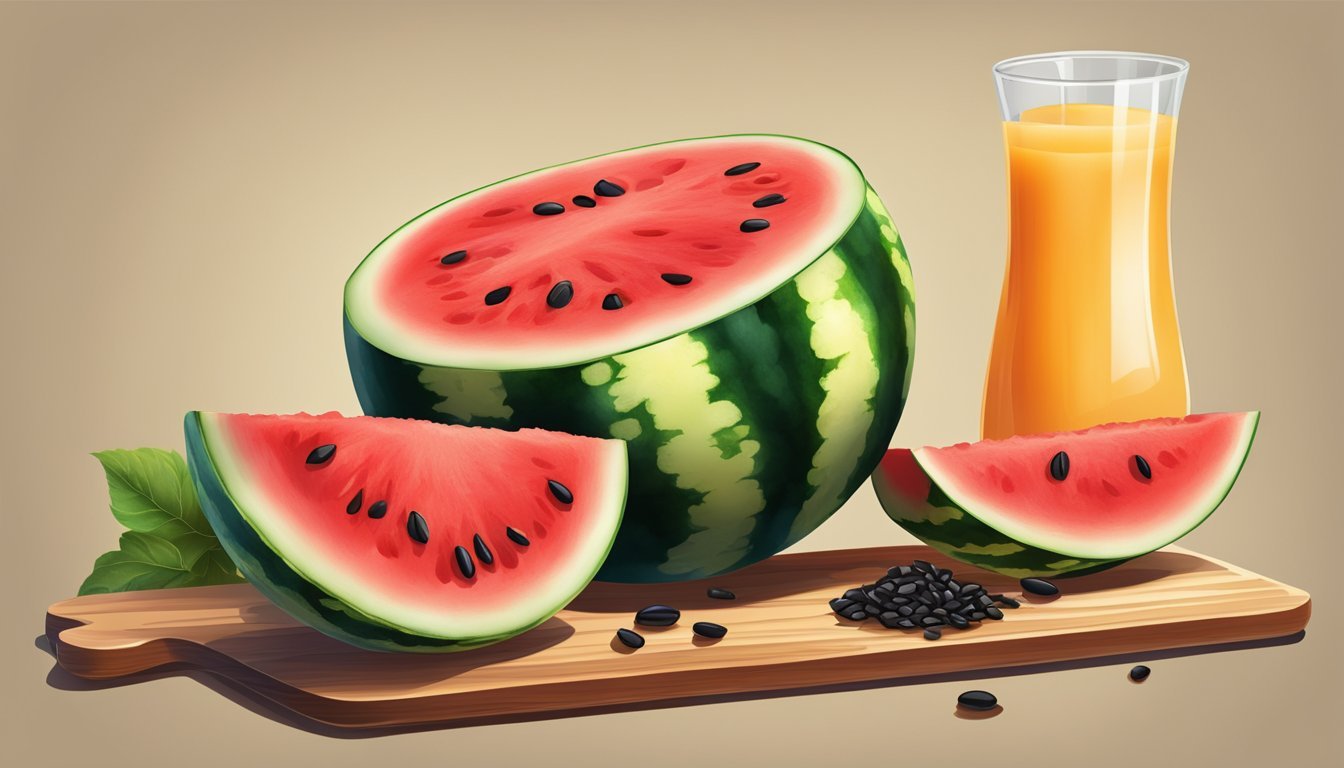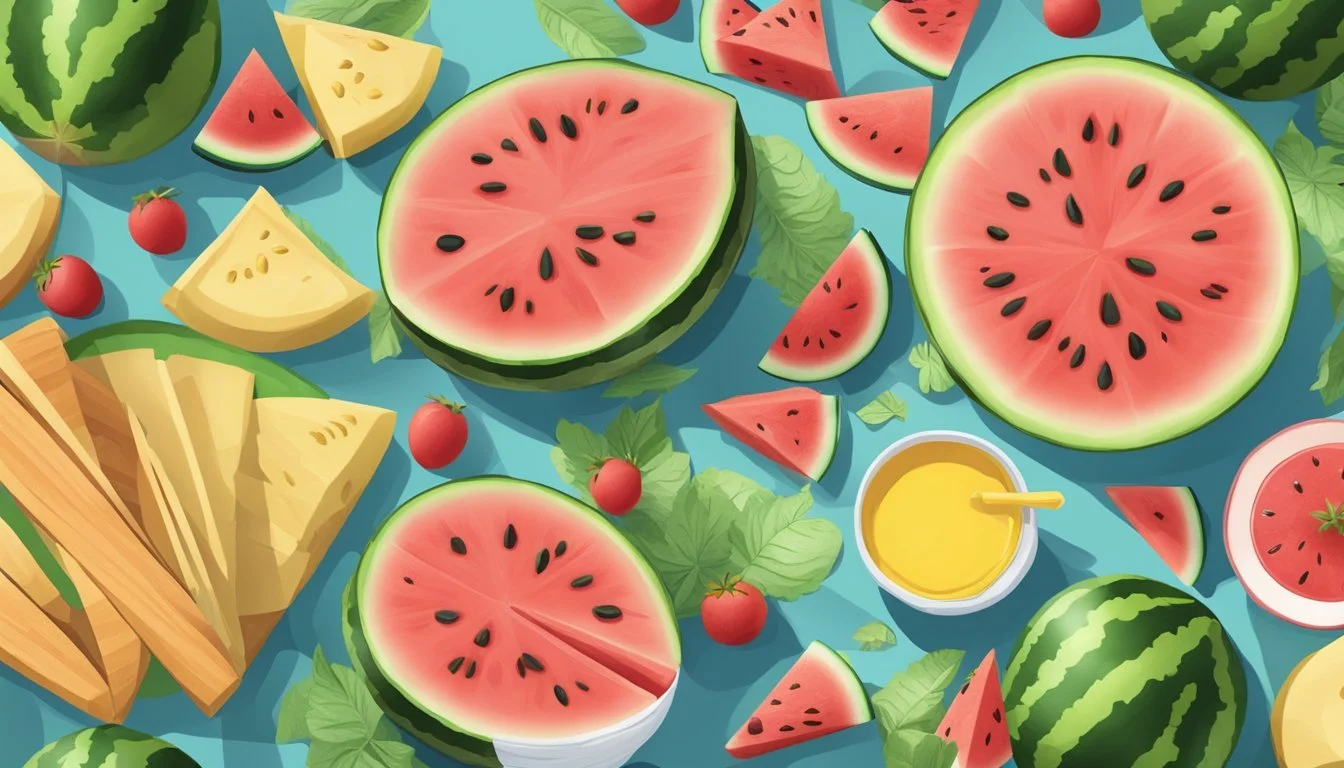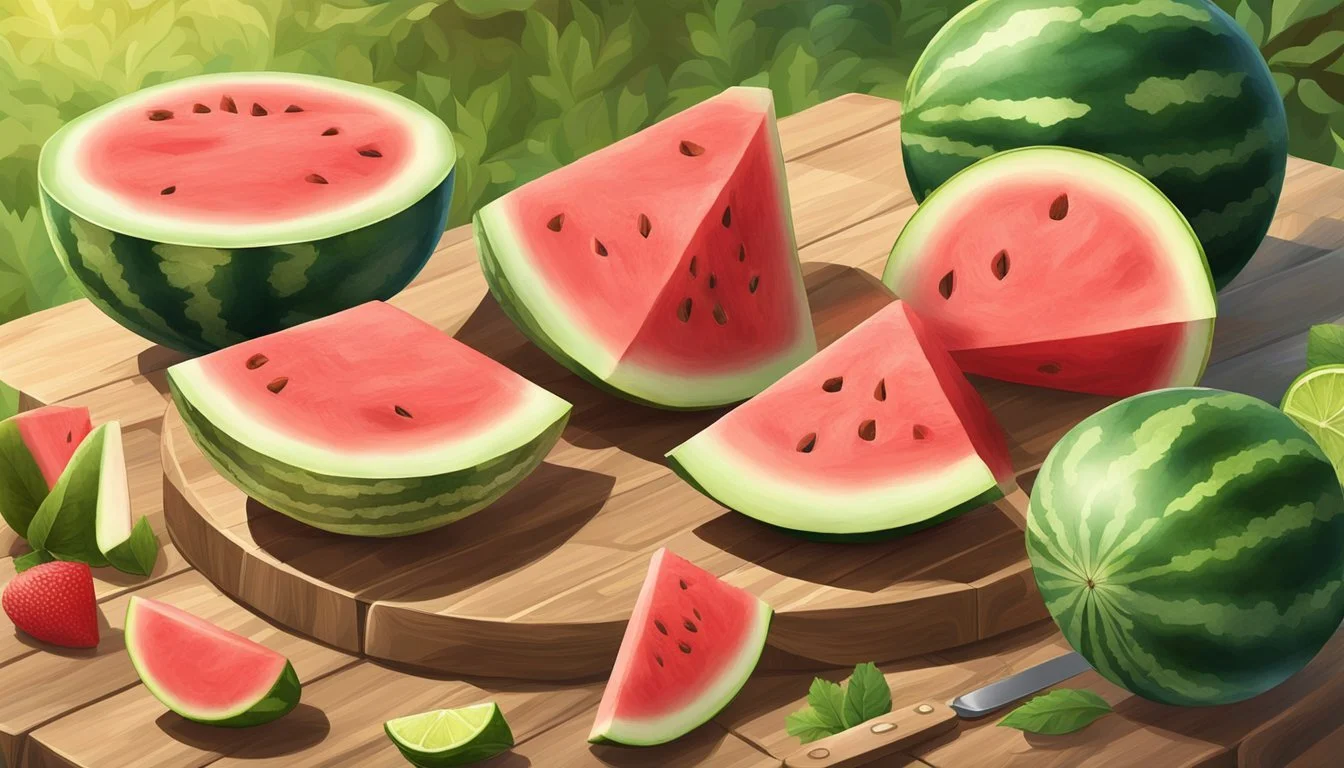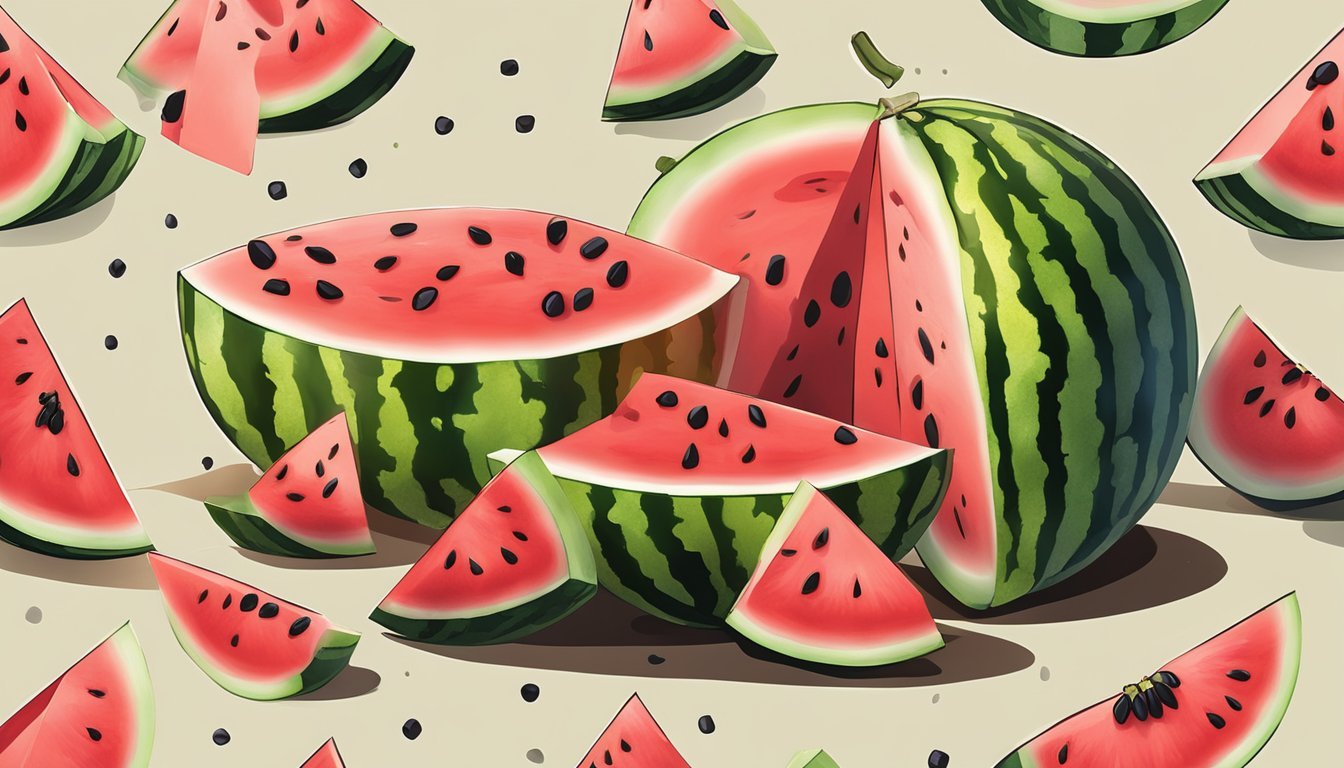How Do You Eat a Watermelon?
Tips for Enjoying This Juicy Fruit
Watermelon stands out as a quintessential summer fruit, renowned for its refreshing juiciness and sweet taste. It's packed with hydration and nutrients, making it a favorite for picnics and beach days. Eating watermelon can be as simple as slicing it up and digging in, but there are numerous other ways to enjoy this fruit. Its versatility allows it to be included in salads, blended into drinks, or even grilled for a smoky twist.
To eat a watermelon, one typically cuts the fruit into slices, wedges, or cubes depending on preference. The rind is generally not eaten, but some cultures do incorporate it into cooking. Furthermore, the seeds, which are often discarded, can be roasted and eaten for their magnesium, iron, healthy fats, and zinc content. With only a handful of calories and high vitamin content, watermelon is an excellent choice for those seeking a nutritious snack.
Incorporating watermelon into one's diet goes beyond eating it raw. It can be used in savory applications, such as a feta and watermelon salad, or in sweet desserts like sorbets. The fruit's natural sweetness and high water content make it a useful ingredient for hydrating and low-calorie culinary creations. Notably, watermelon's low carbohydrate content ensures that it doesn't have a significant impact on blood sugar levels, making it a suitable option for many.
Selecting and Storing Watermelon
When it comes to enjoying a juicy watermelon, selecting the ripest one and storing it correctly are crucial steps. Here's what you need to know to keep your watermelon fresh and delicious.
Choosing the Right Watermelon
To ensure you select a ripe watermelon, there are a few tactile and visual cues to look for:
Color: A ripe watermelon typically has a dull green color with a creamy yellow spot where it rested on the ground.
Sound: One can give the watermelon a thump; a ripe melon should emit a deep, low thud.
Firmness: The rind should be firm and not yield to pressure, indicating a crisp texture inside.
Proper Storage Methods
Once the perfect watermelon is chosen, following these storage tips will help maintain its freshness:
Whole Watermelon:
Store at room temperature, ideally between 68°F and 72°F, away from sunlight.
If kept properly, it can stay fresh for 7-10 days.
Cut Watermelon:
Keep rinds on to preserve moisture if storing in the refrigerator.
If freezing, cut watermelon into small pieces—balls or cubes—remove seeds if preferred for a particular recipe, and spread them out on parchment-lined baking sheets to avoid clumping.
Flash-freeze the pieces for a few hours before transferring to a freezer bag, removing as much air as possible.
Following these suggested methods will ensure one has a ripe, juicy watermelon to enjoy either on its own or as a part of various recipes.
Health and Nutritional Benefits
Eating watermelon contributes to a variety of health and nutritional benefits, including hydration, essential vitamins and minerals, heart health, assistance in weight management, and improved digestive health.
Hydration and Water Content
Watermelon is esteemed for its high water content, reaching about 92%, making it an excellent choice for hydration. The natural sugars and electrolytes in watermelon also contribute to its hydrating effects, which are beneficial for overall bodily function.
Vitamins and Minerals
This fruit is a rich source of vitamin C and vitamin A, both essential for immune system support and skin health. It also provides B vitamins, including vitamin B6, which aids in protein metabolism and cognitive health. Additionally, watermelon delivers minerals such as potassium, which helps maintain proper blood pressure levels, and magnesium, which is involved in over 300 enzymatic reactions in the body.
Vitamin C: Provides antioxidant support and boosts collagen production.
Vitamin A: Important for vision and a strong immune system.
Potassium: Essential for cardiovascular health and electrolyte balance.
Magnesium: Aids in bone health and a regulated metabolism.
Heart Health
The potassium in watermelon can help control blood pressure and counteract sodium's effects, while the amino acid citrulline may improve arterial health. Additionally, the American Heart Association recognizes watermelon for its lycopene content, a powerful antioxidant linked with reductions in cholesterol and blood pressure, factors associated with heart health and the prevention of cardiovascular disease.
Weight Management
With only 46 calories per cup, watermelon is a low-calorie fruit that can be included in a weight management diet. The high water and fiber content can help individuals feel fuller, reducing the likelihood of overeating. Moreover, a lower glycemic load means that watermelon does not cause a rapid rise in blood sugar levels, making it a suitable sweet treat.
Digestive Health
As a source of both water and dietary fiber, watermelon aids in promoting a healthy digestive tract. The fiber helps provide bulk to stool, while the water assists in moving waste through the digestive system, potentially preventing conditions such as constipation. Watermelon, being low in FODMAPs, is also considered friendly to those with sensitive guts.
Preparation Methods
Proper preparation of watermelon enhances its flavor and ease of consumption. Below are specific techniques to cut the fruit and suggestions for serving that can amplify the enjoyment of this summery delight.
Cutting Techniques
Wedge Cutting:
Begin by washing the watermelon rind to remove any dirt and bacteria.
Slice off both ends of the watermelon to create stable, flat surfaces.
Place the melon on one flat end and cut down through the center to halve it.
Lay each half cut-side down and slice into wedges for traditional serving.
Stick Cutting:
Ideal for mess-free eating.
After halving the melon, cut it into 1 to 2-inch grid slices.
The result will be watermelon sticks that can be easily grabbed and eaten.
Serving Suggestions
Salad Incorporation:
Dice watermelon into cubes and combine with feta cheese, mint, and a drizzle of balsamic reduction for a refreshing salad.
Creative Pairings:
Marinate watermelon in gin to impart unique flavors and potentially help with muscle soreness due to the fruit's anti-inflammatory properties.
Grilling Option:
Lightly grill watermelon slices to caramelize their natural sugars, then garnish with mint or add to a recipe that calls for grilled fruit.
Watermelon Gazpacho:
Blend watermelon with tomatoes, cucumbers, and peppers to make a chilled gazpacho, serving as a novel and cooling summer dish.
Pickling:
The rind, often discarded, can be pickled to create a tangy condiment, adding a twist to the watermelon consumption.
Recipes and Pairings
When it comes to watermelon, there are traditional recipes that celebrate its refreshing taste, as well as innovative pairings that elevate the fruit's versatility in both sweet and savory dishes.
Classic Watermelon Recipes
Watermelon Salad: A quintessential summer dish, watermelon salad is both refreshing and easy to prepare. It typically includes cubed watermelon, a handful of fresh mint leaves, and a sprinkle of feta cheese. For an added touch of flavor, a drizzle of balsamic glaze can enhance the sweetness of the fruit.
Ingredients:
Watermelon, cubed
Fresh mint leaves
Feta cheese, crumbled
Balsamic glaze (optional)
A Watermelon Agua Fresca is another beloved recipe that offers a cool reprieve on hot days. Simply blend watermelon chunks with a bit of water, strain, and serve with ice. A splash of lime juice and a few mint leaves stir in a zesty undertone.
Ingredients for Agua Fresca:
Watermelon, cubed and seeds removed
Water
Lime juice
Mint leaves (for garnish)
Creative Watermelon Pairings
Watermelon's sweet yet mild flavor allows it to complement a variety of ingredients. Strawberries can be a delightful pairing; their tartness balances the subtle sweetness of watermelon in fruit salads or smoothies.
Watermelon and Cheese: A surprising yet delicious combination involves pairing watermelon with rich cheeses. For a snack or appetizer, skewer bite-sized pieces of watermelon, a rich cheese like Parmesan, and arugula for a simple yet sophisticated treat.
Skewer Components:
Watermelon, bite-sized pieces
Parmesan cheese, or other rich cheese
Arugula
Utilizing the entire fruit, including the watermelon rind, promotes sustainability and adds texture to dishes. The rind can be pickled or used in stir-fries, adding crunch and absorbing the flavors of seasonings and sauces.
Watermelon Rind Uses:
Pickled watermelon rind
Stir-fried rind with vegetables and protein
In conclusion, watermelon's versatility extends far beyond its role as a standalone fruit. From classic recipes to creative culinary pairings, this fruit can be the centerpiece of a refreshing salad or the unexpected star in a savory appetizer. Whether one prefers to embrace time-honored preparations or explore new flavor combinations, watermelon proves to be a dynamic ingredient in any cook's repertoire.
Potential Health Considerations
When incorporating watermelon into a diet, it's important to consider possible health implications such as allergies, effects on blood sugar, and interactions with medication.
Allergies and Intolerances
Watermelon can cause allergic reactions in some individuals, particularly those who are sensitive to pollen or have a condition known as Oral Allergy Syndrome. Symptoms might include itching, swelling, or bloating. Moreover, the fruit contains cucurbitacin E, a compound that can lead to digestion issues such as diarrhea or stomach cramps in sensitive individuals.
Effects on Blood Sugar and Diabetes
Despite being a refreshing snack with health benefits for hydration and nutrition, due to its sugars and carbohydrates, watermelon has a high glycemic load. People with diabetes should monitor their consumption to avoid spikes in blood sugar levels. The fruit's fiber content is low, which can affect glucose absorption and blood sugar regulation.
Interactions with Medications
Watermelon's diuretic properties may affect the excretion rate of certain drugs. It contains potassium, which in large amounts can interact with medications for heart disease and high blood pressure. Patients on such medications should consult with a healthcare provider to ensure watermelon consumption is appropriate. Additionally, the magnesium and iron in watermelon seeds can interact with certain medications, altering their effectiveness.
Watermelon in Various Diets
Watermelon is versatile and compatible with various dietary approaches due to its low calorie content and nutritional profile. It provides significant health benefits, including hydration and the supply of important nutrients without the addition of fats or cholesterol.
Compatibility with Dietary Restrictions
Watermelon is generally well-tolerated by individuals with dietary restrictions. It's naturally free of fat, cholesterol, and sodium, making it suitable for heart-healthy diets. It also contains negligible amounts of protein, making it a friendly option for those with certain protein restrictions. For individuals with allergies, watermelon does not commonly trigger reactions; however, as with any food, individuals should be aware of their specific sensitivities. The low fiber content in watermelon might not alleviate digestive issues like constipation, but it is unlikely to cause bloating or diarrhea when consumed in moderation.
Incorporation into Weight Loss Diets
Watermelon can be a beneficial addition to weight loss diets due to its low calorie density. One cup of diced watermelon contains approximately 46 calories, primarily from its 9 grams of sugar. Its high water content can help individuals feel full, potentially reducing overall calorie intake. However, the modest sugar content should be considered in the context of an individual’s total dietary sugar intake.
Nutritional Breakdown (per 1 cup diced):
Calories: 46
Fat: 0g
Carbs: 11.5g
Sugar: 9g
Fiber: 0.6g
Use in Performance and Recovery Diets
For athletes and those focused on exercise performance, watermelon may be beneficial for recovery and performance due to its water content and the presence of arginine and lactate. These components can aid in the regulation of blood flow and energy production. It's also a refreshing choice for rehydration. Studies suggest the amino acid arginine in watermelon could potentially support improved blood flow, although its direct effects on exercise performance warrant further research. Additionally, its low calorie count makes it a prudent snack for maintaining optimal body weight and waist-to-hip ratio, which are important for both performance and general health.
Cultural and Historical Context
The consumption of watermelon stretches back millennia and has shaped culinary traditions around the world. Throughout its history, it has been admired not only for its refreshing taste but also for its versatility in various dishes and its nutritional value.
Traditional Consumption
Watermelons have been cherished as a nutritious source of hydration for thousands of years. Originating from Africa, they were valuable for their high water content, with ancient Egyptians cultivating them as early as 2,000 B.C. Watermelon seeds have been discovered in archaeological sites, highlighting their historical significance. Traditionally, watermelons were consumed raw or occasionally made into a fermented beverage.
Watermelon in Culinary Traditions
In culinary traditions, watermelon has been used in an array of dishes beyond its raw, fresh form. Here are some specific uses:
Salads: Watermelon, combined with ingredients like feta cheese and mint, creates a refreshing salad rich in Vitamin C and other nutrients.
Grill: Grilling watermelon can caramelize its natural sugars, offering a smoky and sweet flavor as an unconventional side dish or dessert.
Pickling: Pickled watermelon rind is a practice seen in various cuisines, adding a tangy flavor to the often-discarded part of the fruit.
Gazpacho: Some recipes give a twist to the traditional tomato gazpacho by integrating watermelon for a sweeter, cooler rendition.
Each culinary application of watermelon comes with health benefits. Registered dietitians often highlight watermelon's nutritious profile, which includes hydration and a modest calorie count, making it a healthy choice for snacking or as part of a meal.
Frequently Asked Questions
When it comes to enjoying watermelon, consumers often have specific questions regarding its health benefits, nutritional content, and best methods for consumption. This section aims to address these points with clear, fact-based insights.
Common Queries About Watermelon
Is watermelon good for hydration? Watermelon is approximately 92% water, making it a great option for hydration. Its high water content can help meet fluid needs, especially on hot days or after physical activity.
What nutrients are found in watermelon? This fruit is packed with nutrients such as vitamin A and vitamin C, both important antioxidants. Watermelon also contains potassium, magnesium, iron, calcium, and fiber, while being low in sodium. The presence of lycopene, another antioxidant, gives watermelon its characteristic red color.
Can eating watermelon help with digestion? The high water and fiber content in watermelon can aid in promoting regular bowel movements and preventing constipation.
How does watermelon fit into a diabetes diet plan? Watermelon has fructose, a type of sugar. However, because of its water and fiber content, it has a relatively low glycemic index and can be included in a diabetes meal plan in moderation.
Are the seeds of watermelon edible? Yes, watermelon seeds are edible and can be a nutritious snack when roasted. They provide a good source of magnesium and iron.
Does watermelon contain a lot of sugar? Watermelon does contain natural sugars, with fructose being the most prevalent. However, it's also low in carbohydrates and calories, making it a sweet treat that can still fit within a balanced diet.
Is watermelon considered a high FODMAP food? Watermelon is a high FODMAP fruit, which means it contains a considerable amount of fermentable carbohydrates that can cause digestive discomfort in some individuals, especially those with Irritable Bowel Syndrome (IBS).
What is the carbohydrate content of watermelon? A standard serving of watermelon, which is 1 cup diced (about 152 grams), contains around 11 grams of carbohydrates. This is relatively low compared to certain other fruits and snacks.
By understanding these facets of watermelon consumption, individuals can enjoy watermelon's taste and nutritional benefits while making informed dietary choices.








